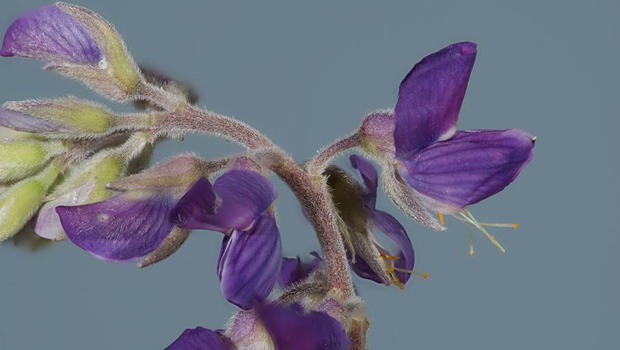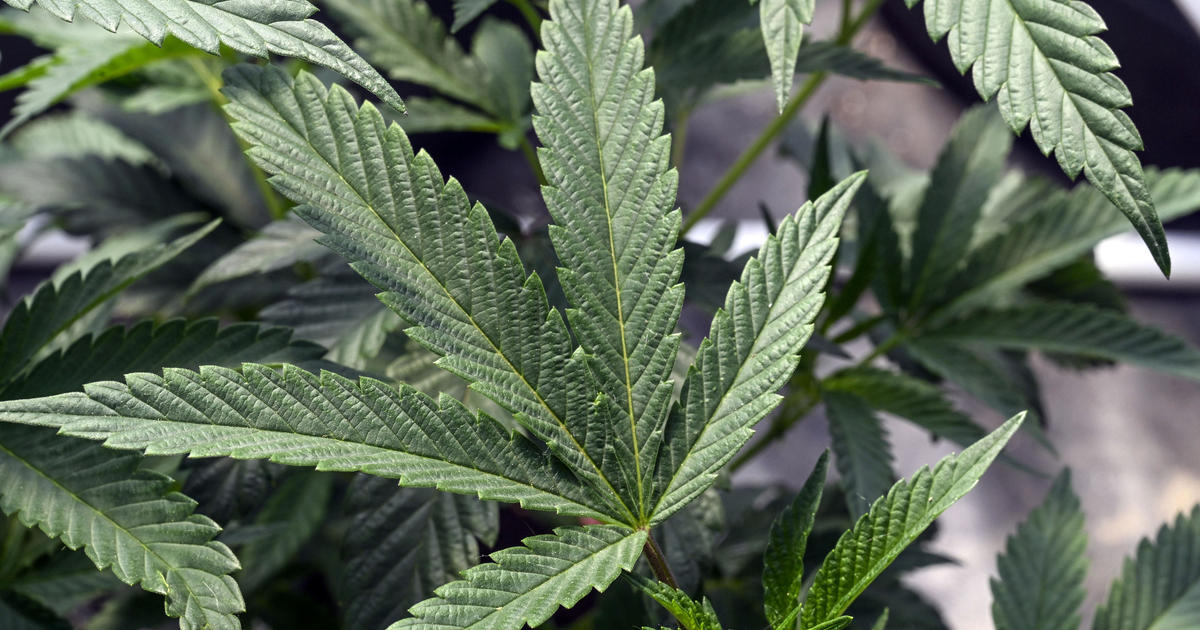Nature up close: Rocky Mountain Spring
By “Sunday Morning” contributing videographer Judy Lehmberg.
Do you remember the Peterson Field Guide Series? Roger Tory Peterson wrote the first easy-to-use bird field guide for the U.S. in 1934. I didn’t discover it until the mid-1970s. That was my first bird book, and I quickly acquired many of the others in the series.
- Almanac: Roger Tory Peterson (“Sunday Morning,” 08/28/16)
- From the archive: Bird-watcher Roger Tory Peterson (1980)
My favorite is “A Field Guide to Rocky Mountain Wildflowers” by John and Frank Craighead and Ray Davis. The Craighead brothers were the first modern-day researchers to study grizzly bears in Yellowstone and Grand Teton National Parks. They also published a plant field guide. That guide was my constant companion while I learned the plants of the Rockies. I love their book because it not only identifies plants; it adds interesting tidbits about them. I just randomly opened my copy and found blue flax. Under “Interesting facts” it adds, “Named for Captain Meriwether Lewis. ... Try twisting the stems. … It should behave like a piece of string and not readily break.”
They also relate blooming times to other activities. For example, under “American Vetch” they add, “First appears about the time cow moose are dropping their calves.” I love how they link blooming plants with animal activities.
The Colorado Rockies are part of the Rocky Mountains, which stretch more than 3,000 miles from northern Canada all the way south into New Mexico. Geologically speaking, the Rockies are relatively young; we know that just by looking at their tall, jagged peaks. Older mountains such as the 480 million-year-old Appalachian Mountains are more rounded and not as high due to erosion. The Rocky Mountains began forming about 80 million years ago during the Laramide orogeny when two plates off the then-West Coast of North America slid under the North American plate. Mountains rise, and as they rise they erode. Their eroded soil is washed to lower elevations, where it is deposited as particles (gravels, sand and silt). Each soil variation has plants particularly suited to it, resulting in the great flower diversity found in Colorado, from high-altitude alpine meadows to silted-in oxbows in river floodplains.
Although Colorado is now home to close to six million people, it still has more than 16 million acres of public land, much of it in the Rocky Mountains, where wild flowers are just beginning to bloom now.
Some of the plants in this week’s “Sunday Morning” nature video are, in order of their appearance:
Wild rose -- This is the provincial flower of Alberta, Canada. Unlike some newer domesticated roses, the wild rose is fragrant. Bees love them, and so do I. Its fruit, rose hips, makes the most delicately-flavored jelly.
Lodgepole pine -- A cluster of male cones with one mature female cone. Many people ignore male pine cones. They last only a few weeks, unlike female cones which take three years to mature and produce seeds.
Lupine -- These are in the genus Lupinus, which is derived from the Latin word “lupus,” which means little wolf. They have bacteria living in their nodules which convert atmospheric nitrogen into ammonia and other nitrogen compounds. Thus, lupines enrich the soil.
Mountain parsley -- A member of the parsley family, it has small yellow flowers arranged to form an umbrella shape with finely dissected leaves.
Golden banner -- This yellow pea is also called false lupine.
Canada thistle -- Its name belies the fact that it is an invasive species from Europe. It can crowd out native species and reduces crop yields on farmland.
Yellow sweet clover -- Another invasive species from Europe and also Asia. Canada thistle was accidently introduced to North America but the introduction of yellow sweet clover was intentionally brought in as a forage crop. I know I’m not supposed to like it, but I do. I find it particularly interesting when it grows on roadsides, evidently taking advantage of the rain runoff from the road.
Rocky Mountain penstemon -- A purple tube-shaped flower with five stamens, one of which is always sterile.
Red Indian paintbrush -- This has small red flowers surrounded by red-tipped leaves that look like flower petals.
Judy Lehmberg is a former college biology teacher who now shoots nature videos.
For more info:
- Judy Lehmberg (Official site)
- Judy Lehmberg’s YouTube Channel
To watch extended “Sunday Morning” Nature videos click here!







